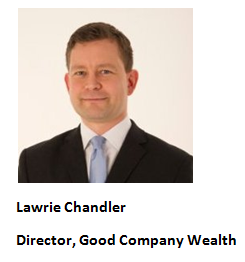Feb
2020
Finding income that’s not scary and ugly
DIY Investor
14 February 2020
The UK, like most developed nations, saw its birth rate peak in the mid 1960’s, so in the next decade we will see a surge of people reaching the state retirement age.
nations, saw its birth rate peak in the mid 1960’s, so in the next decade we will see a surge of people reaching the state retirement age.
From a personal finance perspective, they’ll also be shifting priorities from wealth accumulation to income generation. This phenomenon could be called ‘peak income’. Though with anaemic cash rates and gilts under water compared to inflation where can someone earn a decent income without being terrified when they see all the risks?
Traditional solutions are under water whilst demand will only grow
In January the 15 year gilt was at 0.88% and inflation was reported at 1.4%. The real value of your hard earned money invested in the safest income asset in the land is being eroded. This is before income tax is applied. For some a higher capital value of their gilt offsets a low yield but for most in an age of needing an income they want their investments to pay an income and have a constant capital value.
Equities come with a decent dividend yield – the FTSE 100 currently returns 4.35% – but at the same time a 12% volatility price. Can an income investor accept such capital highs and potential lows in the silver haired years of their life?
The growth of alternative income
Many people have taken to the convenience of collective investment schemes as their product of choice for income, given the instant diversification and easy availability. Unfortunately, the FCA Interim Asset Management report showed that 51% of people in their investor survey did not realise they were paying fund charges.
‘there is a national appetite for income which needs more solutions’
The additional fees of a fund manager, unknown cash flows and capital value movements have seen new products emerge in the past decade.
Mini-bonds, peer to peer lending and the LSEs Retail Bond market are direct offerings that allow income cash flows to be clearer at the time of purchase and capital returned at a date in the future.
How scary and ugly are new income solutions?
Here we give a brief snapshot of some of the less know facts of mini-bonds, peer to peer lending and Retail Bonds. One of the major points with all of these securities are they relate to financing private individuals and/or small/medium enterprises which do not have the security and comfort of big businesses.
This straight away focuses attention on a more concentrated risk of the individual or specific enterprise.
Retail bonds have been successful, albeit from a very small base, with issuance doubling over four years, but many of the credits available in this market are linked to financial service firms, which have a very specific and concentrated risk profile as a sub-class. The spread on retail bonds and volumes traded show this is still a junior market in development.
‘what is the price of the risk you are taking?’
Mini-bonds have been a successful vehicle for borrowing especially where retail investors can see their return is linked to a tangible asset or government backed initiative. These assumptions have proven short coming as many of the operating businesses that have borrowed in this way have struggled or increasingly failed.
A useful measure to consider when doing peer to peer lending is the risk-adjusted income. This is simply the gap between what you receive as a lender and what the borrower pays. What is the price of the risk you are taking: is it the 5% you receive in your P2P wallet or the 8% the borrower pays?
This formula can be good rule of thumb guide how to price the risk and return.
Corporate Bonds: An old solution that needs to be opened to direct investors
When Italy’s motorway operator wanted to connect northern and southern Italy they borrowed from international investors to complete the road in 1964. The bond paid a coupon of 5.5% and the first Eurobond was born; this corporate bond market is now worth EUR1.7trillion.
Sadly as an asset class, Eurobonds are largely closed to all but pension funds and institutional fund managers; these securities do not trade on an exchange, require a typical minimum £100,000 investment per security and there are no ‘retail friendly’ access points.
This is the instrument that the LSE are trying to bring to ORB (Order book for Retail Bonds – more) but corporate treasurers are satisfied with the main market so are not sadly queuing for the retail market.
Given demographic shift and demand for investments to provide a ‘salary’, there is a national appetite for income which needs more solutions; and which the corporate bond market should play an important part.
Cash and gilts are the secure income side of the story with alternative finance there as a riskier, higher reward solution.
For DIY investors the security of owning a piece of corporate bond from a big, well known firm could be a nice halfway house to add to the asset mix.
Lawrie Chandler is the founder of bondsmart a new platform to bring fractional ownership to everyday investors that need income.
Commentary » Fixed income Commentary » Fixed income Latest » Latest » Take control of your finances commentary
Leave a Reply
You must be logged in to post a comment.